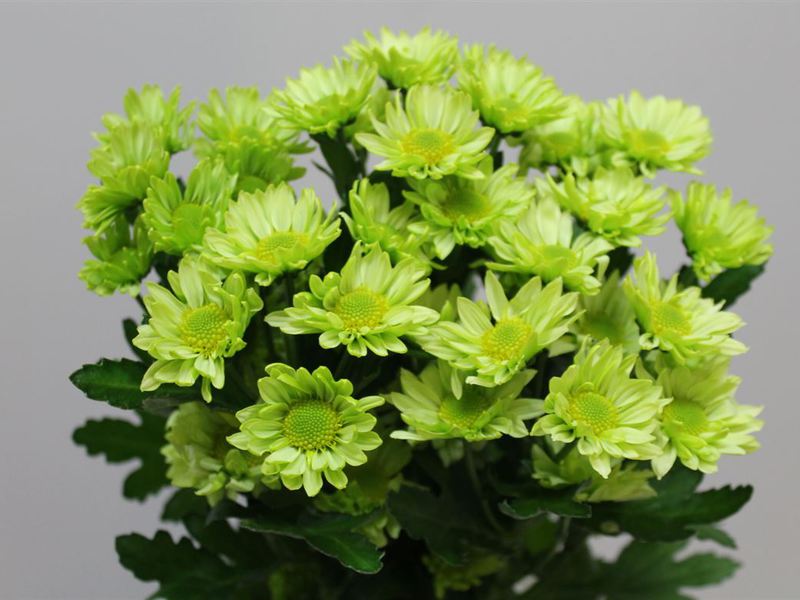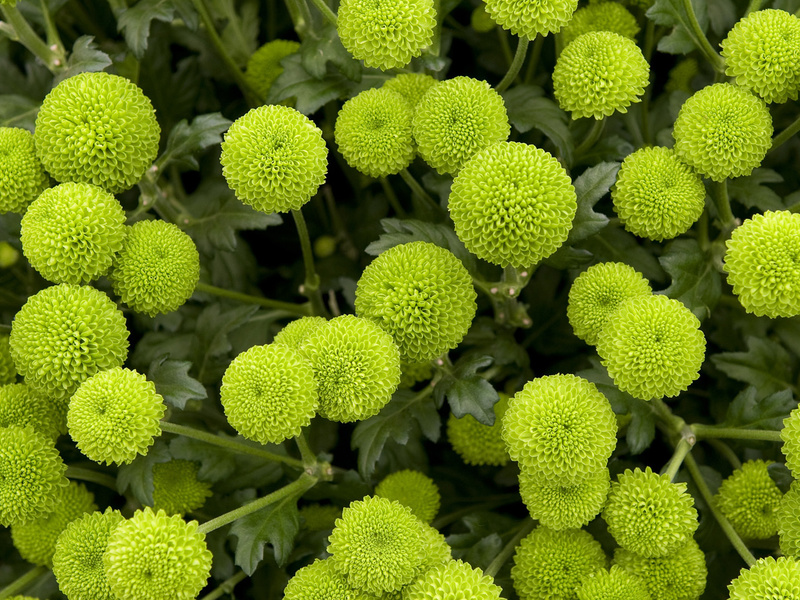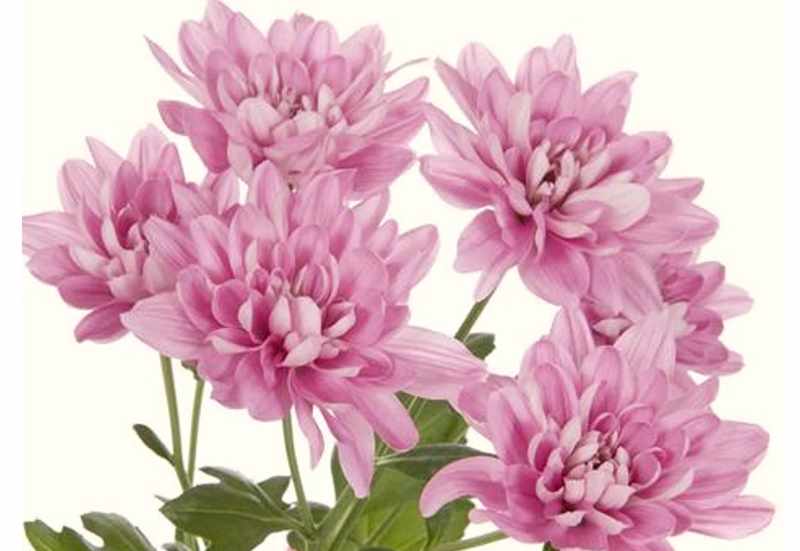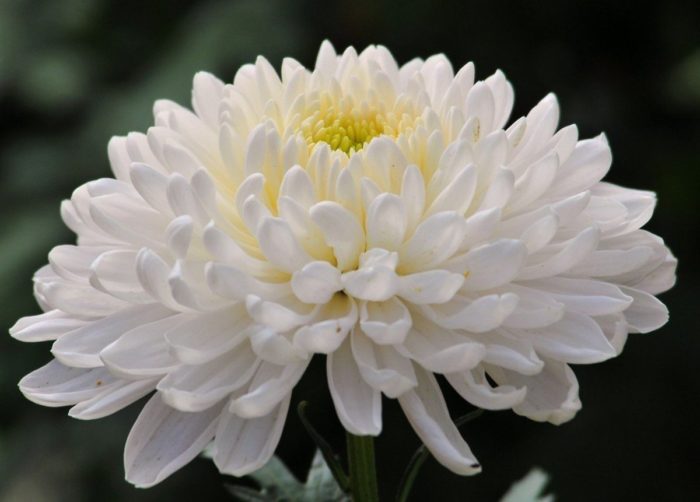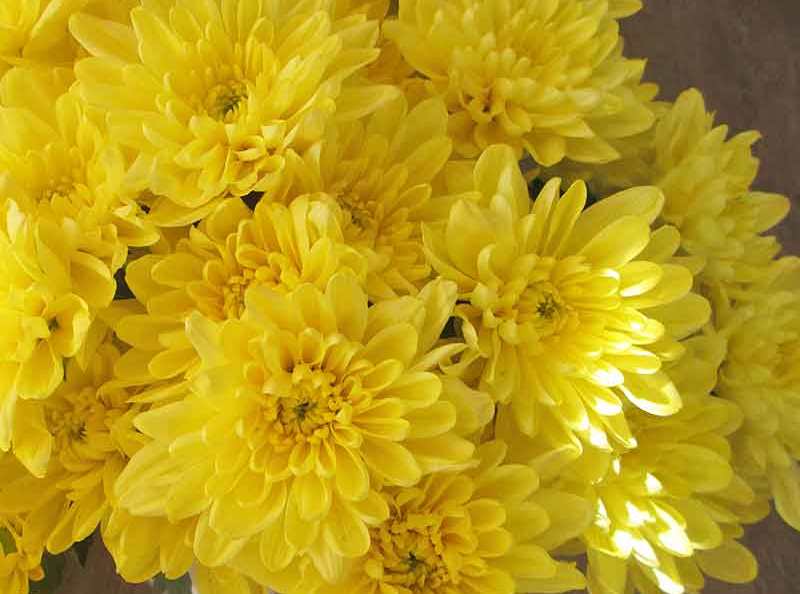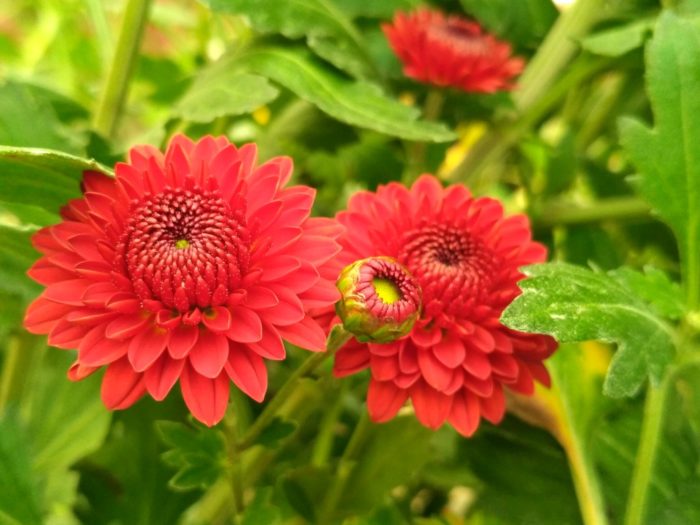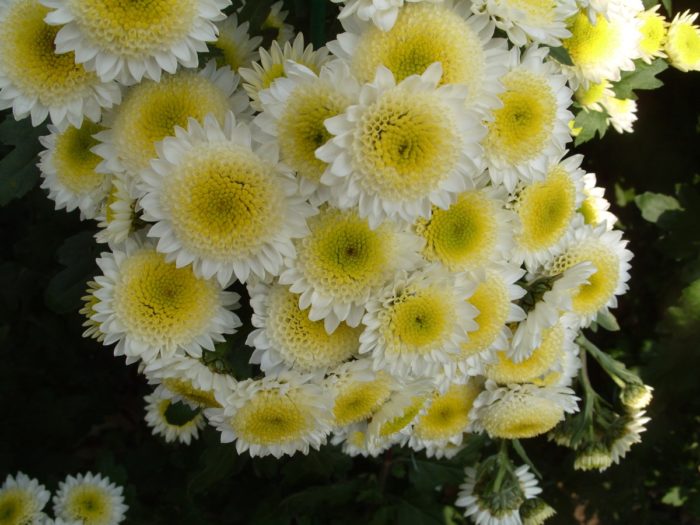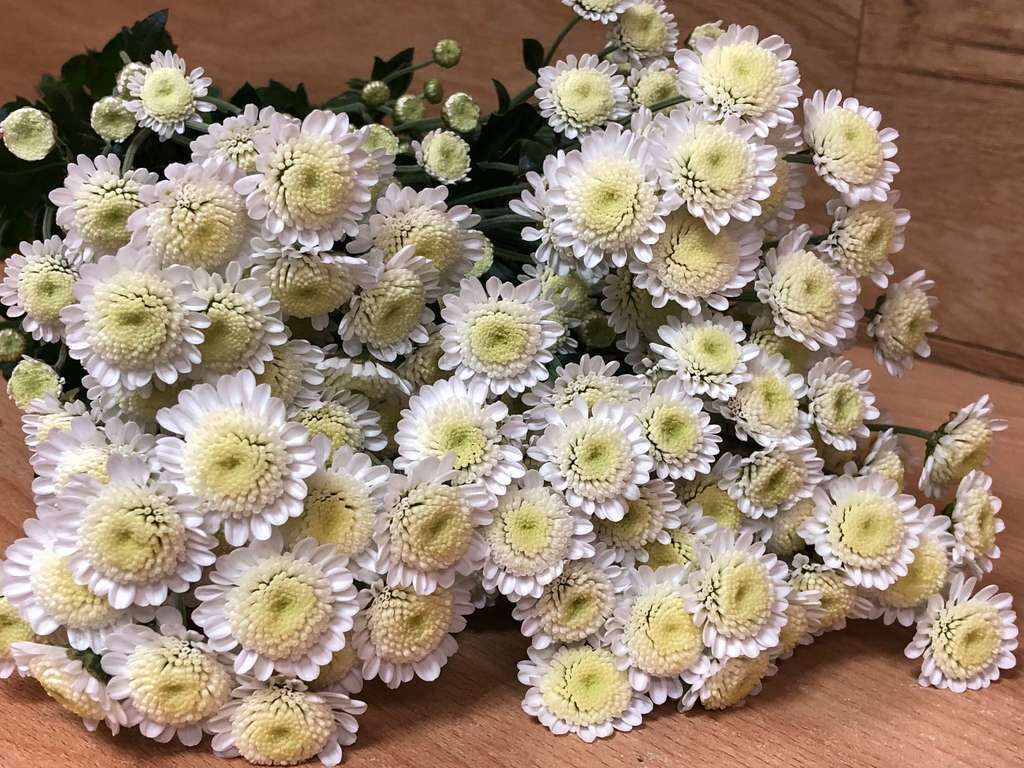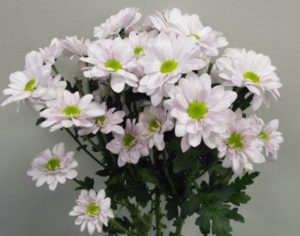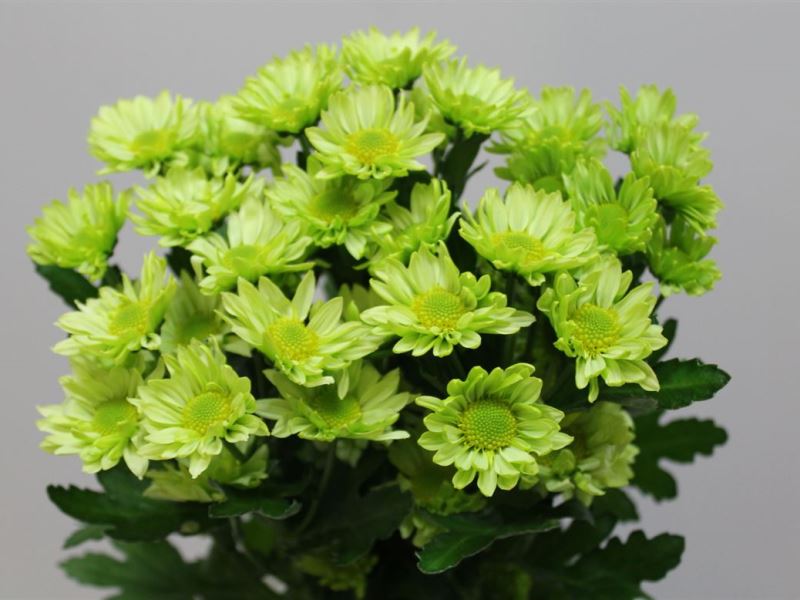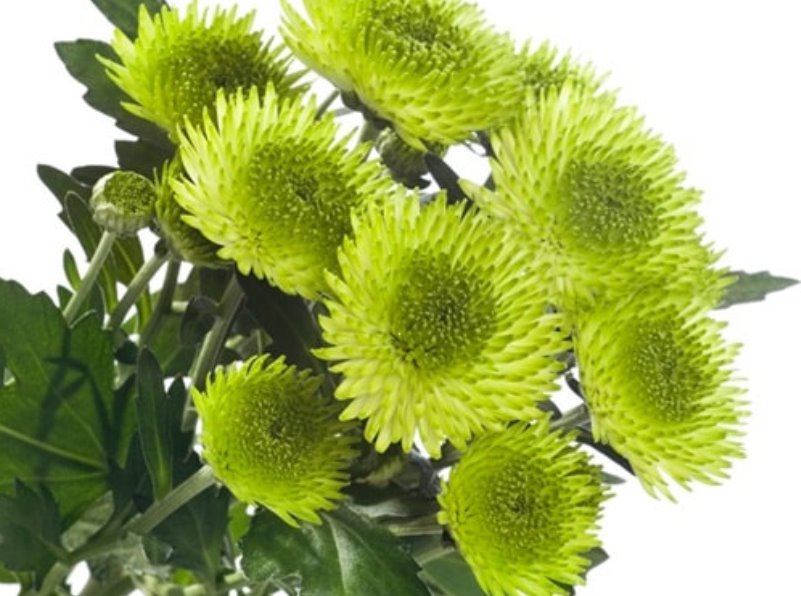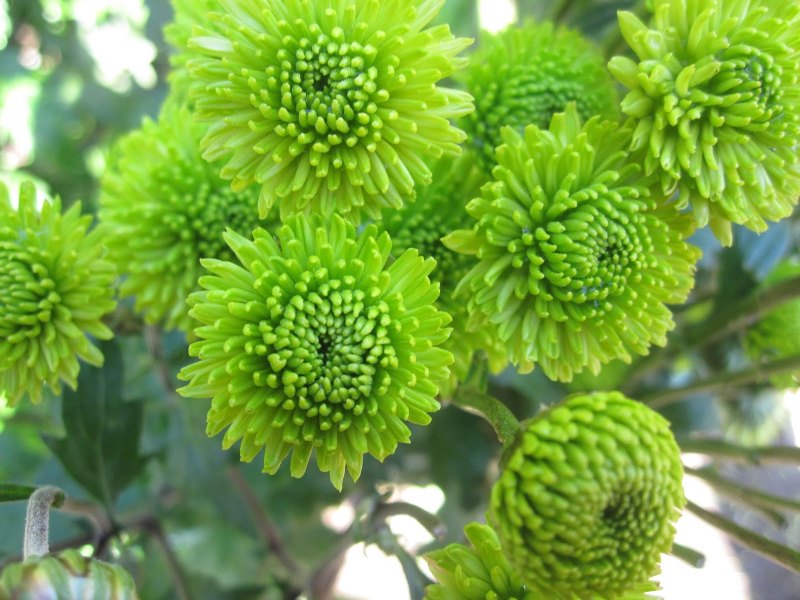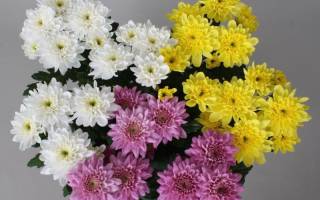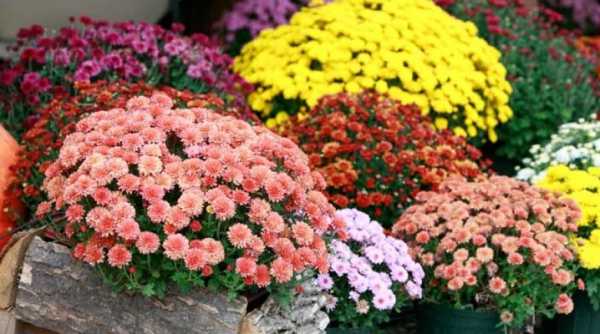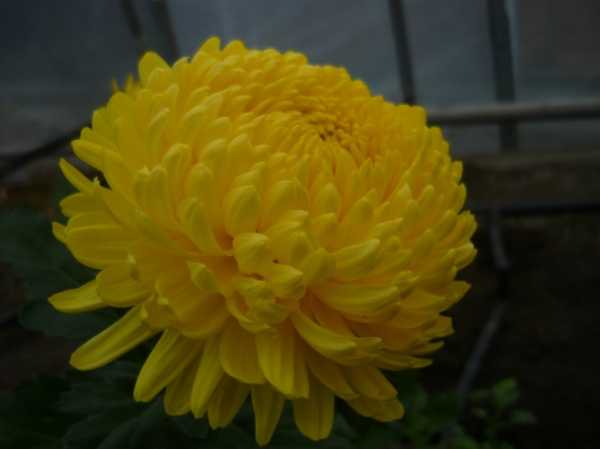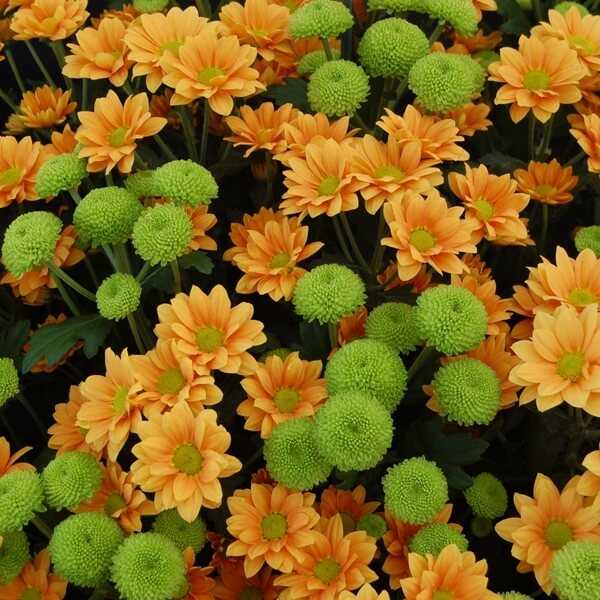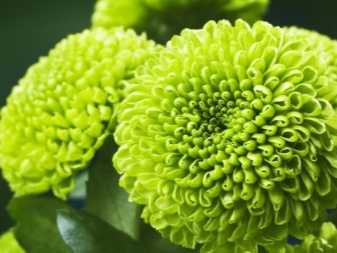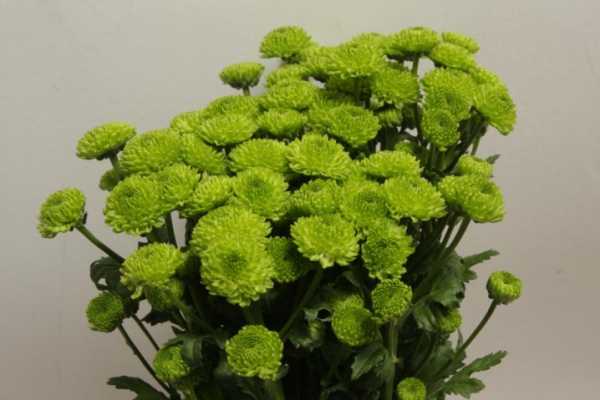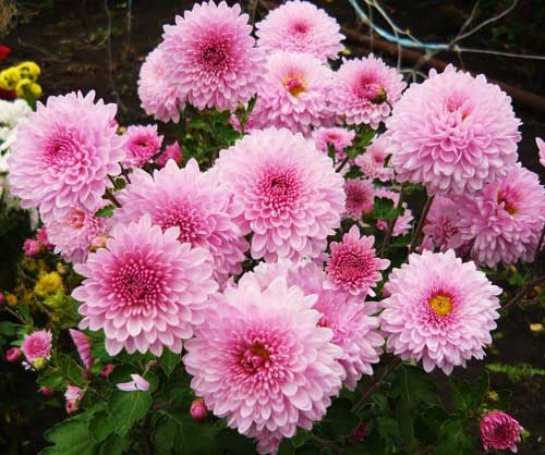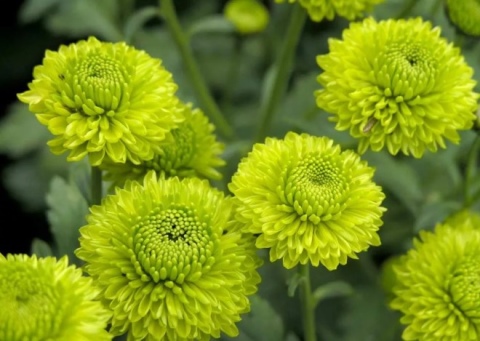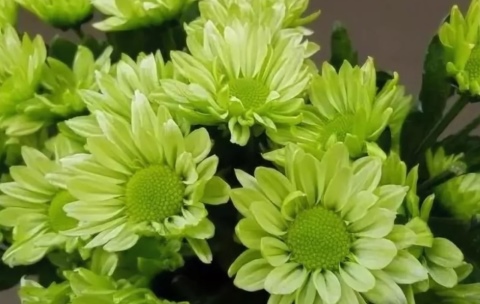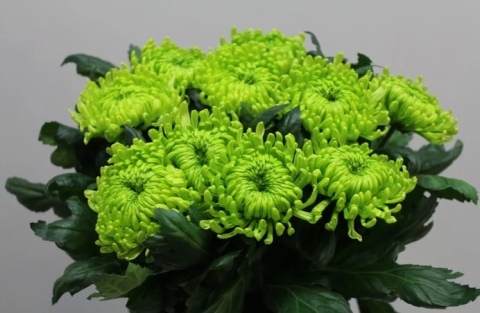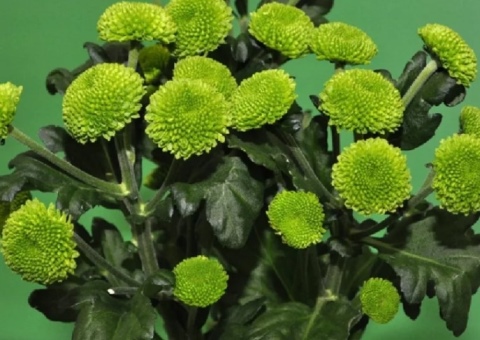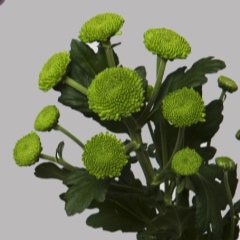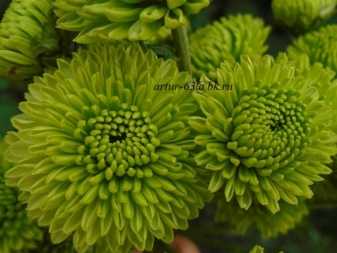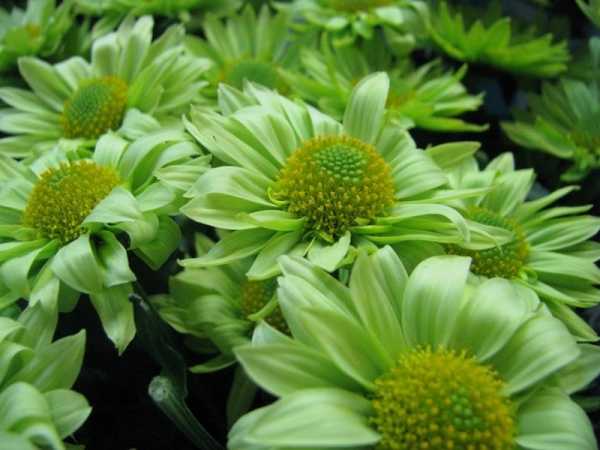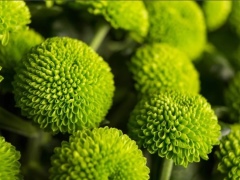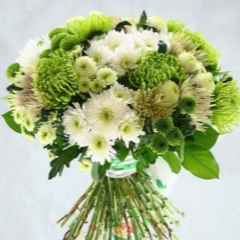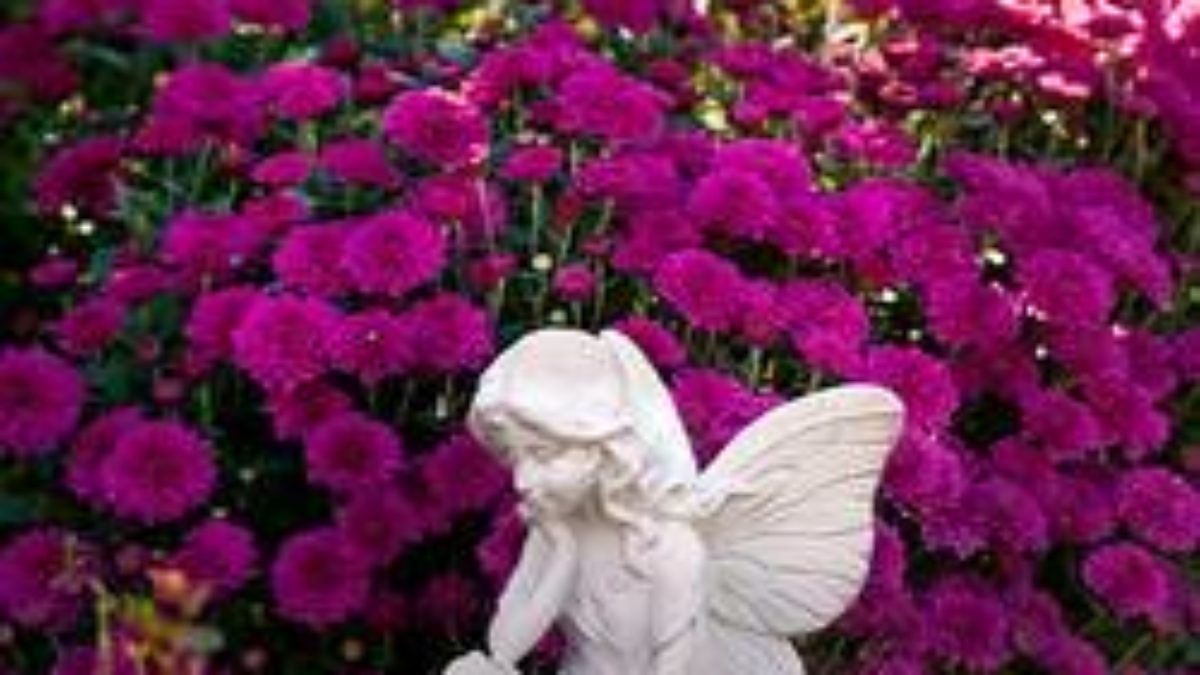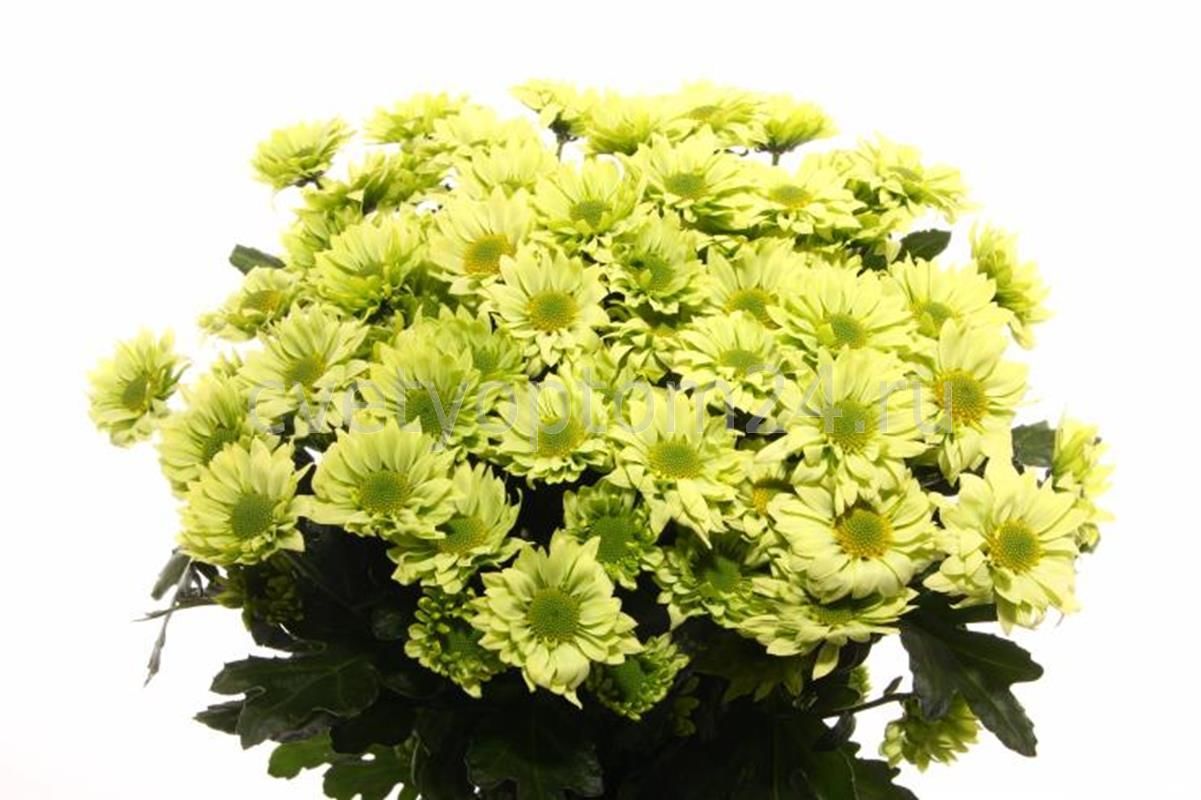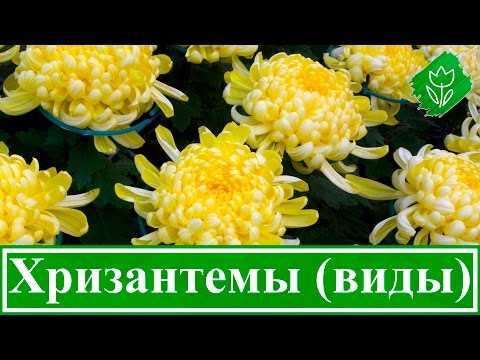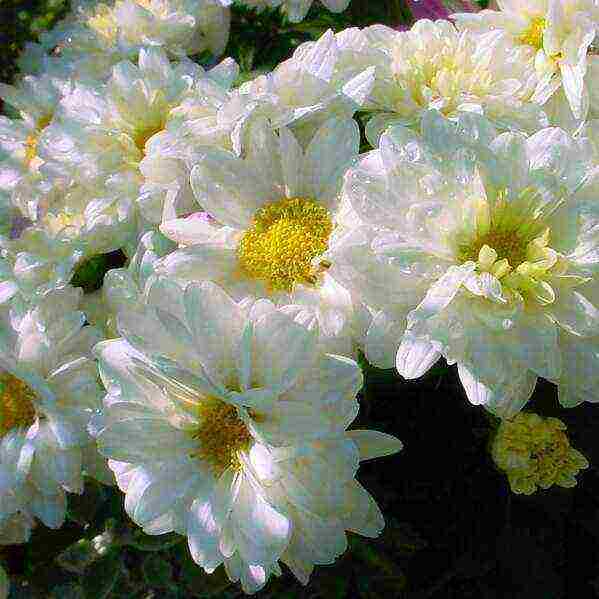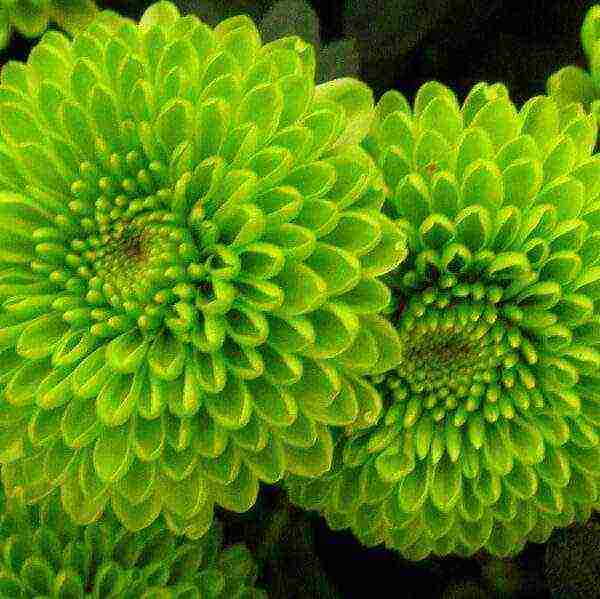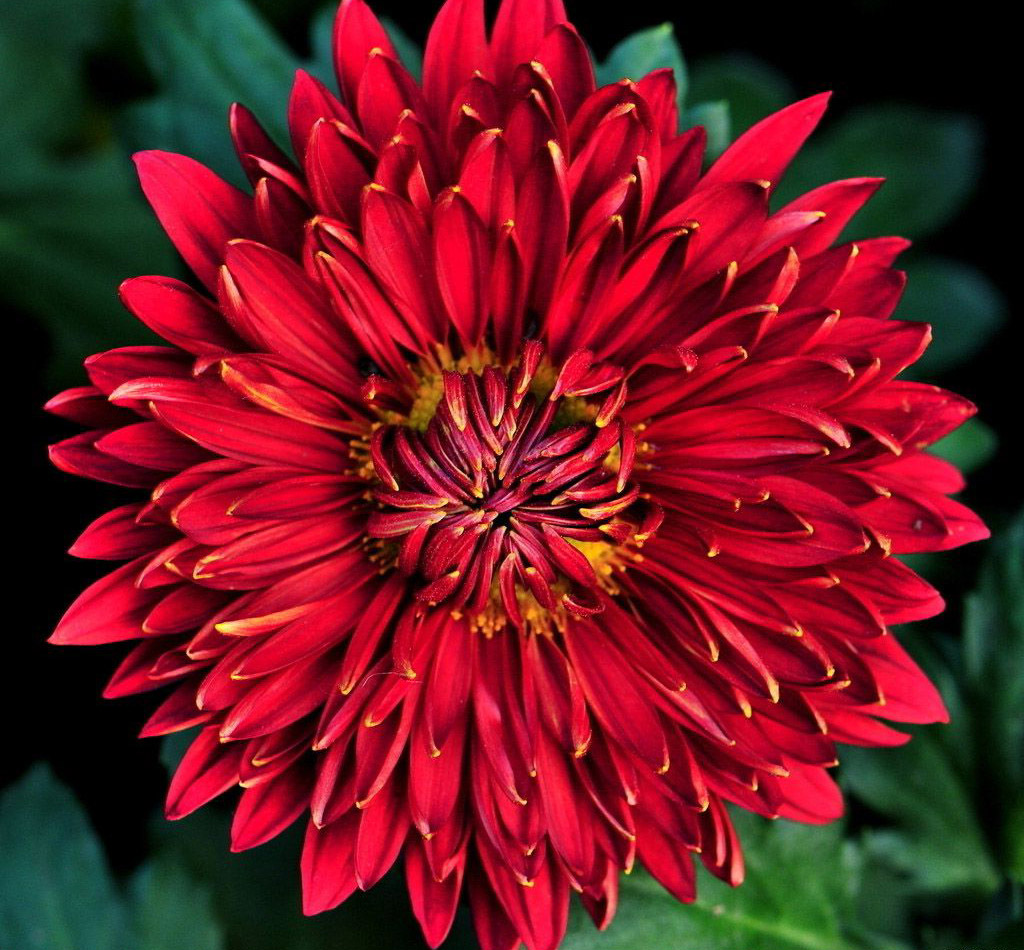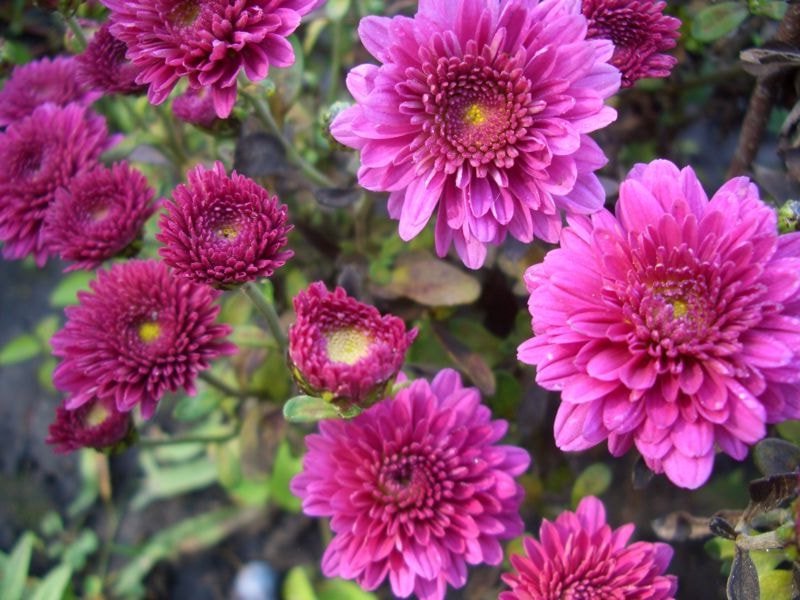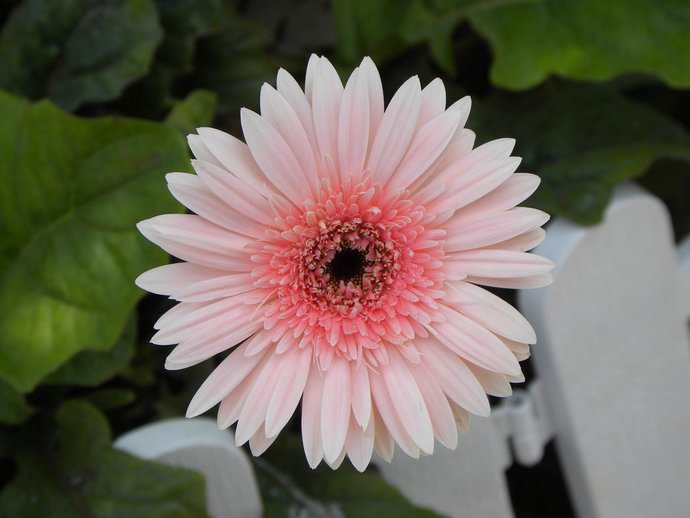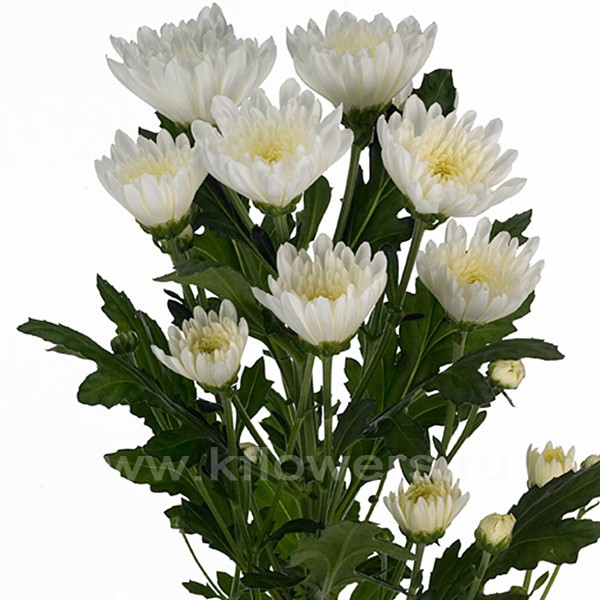How to grow chrysanthemum correctly?
Everyone wants to grow a beautiful chrysanthemum on their personal plot. To do this, it is useful to know how this plant reproduces, how bush chrysanthemums are planted, and what is their care
In this case, it is important to take into account the characteristics of the variety.
Culture propagation methods
The culture can propagate in three ways: by seeds, cuttings and by dividing the shrub. The order of actions depends on the chosen method. Even if the gardener has no experience in planting chrysanthemums, there is no need to worry. After all, the flower is very unpretentious and easy to grow.
Growing chrysanthemum seedlings
After all, the specimens obtained will not completely resemble those chrysanthemums from which the seed was taken. Seeds are sown between January and February.
To get high-quality chrysanthemum seedlings, you should follow these steps:
- Choose a container for planting. Buy ready-made soil or prepare a mixture of peat and humus yourself.
- Pour a drainage layer of broken brick, gravel or expanded clay on the bottom of the box. This will avoid waterlogging of the soil during irrigation.
- Fill the container with earth.
- Sow seeds. Much depends on the selected variety. If the culture is annual, then sprinkle the seeds on top with a 0.5-centimeter layer of soil. But perennials will be enough to lightly press down to the surface.
- Cover with plastic wrap or glass. Place in a well-lit place.
- Arrange proper care. The speed of emergence of seedlings and their quality depends on this. The optimum room temperature is +24 degrees. Periodically, the seedlings should be ventilated and sprayed with settled warm water. With good maintenance, the first shoots will appear after 1.5-2 weeks. From this moment it will be necessary to accustom chrysanthemums to open air. If the culture has grown strongly, a pick is performed. Already after 1.5 months, the young plant will reach a height of 20 centimeters, and it can be transferred to the garden.
Planting seedlings in a garden plot
Seedlings of annual plants are transferred to open ground in the month of May, and perennial varieties are transplanted in early June. It is advisable to choose a place on the site that is well lit and protected from the wind. Chrysanthemum loves slightly acidic drained soil.
The landing algorithm is as follows. They make holes in the ground, while maintaining a distance of 20-25 centimeters between the holes. Each well is sprinkled with warm water. Seedlings are transferred from the pot to the hole along with an earthen lump. Sprinkle with earth. Further, it all depends on what kind of care for bush chrysanthemums the gardener organizes.
In the spring, before the flowering phase, they are irrigated very abundantly. The main thing is not to overmoisten the substrate. And when buds begin to form, watering is reduced. During the period of active flowering, it is gradually brought to a minimum. It is required to feed chrysanthemums regularly at intervals of once every two weeks. Mineral mixtures and organics are used. Once every few years, the bush is divided. For the winter, the culture should be covered, even if the variety belongs to the category of cold-resistant.
If the care is organized correctly, the chrysanthemum will be resistant to ailments and pests. But sometimes novice gardeners still make mistakes. Therefore, it is required to understand what diseases and parasites the chrysanthemum is prone to, how to deal with them.
Most often, the plant is attacked by aphids. These insects are capable of settling in a bush in whole colonies. The method of treatment depends on the degree of damage. For example, if several beetles are found, they can be collected by hand or the infected leaves can be cut off.But if the chrysanthemum is covered with aphids, special preparations are used. The most effective are Actellic, Calypso, Confidor and Aktara.
Often on the culture, you can see the activity of small roundworms - nematodes. They cause whitish spots on the leaves, lead to drying and curling of the leaf plate. The buds bloom, but they look very unsightly. To get rid of beetles, they are treated with a phosphamide solution.
The most common diseases are gray rot, leaf rust and viruses. Rot is manifested by the formation of brown spots on the leaves. To fight, remove diseased leaves, spray the bush with Fundazole or Purest flower. If there are small spots of a light yellow or pink hue on the leaves, rust is most likely. It is treated with fungicides, top dressing. Viruses lead to yellowing, discoloration of foliage. Growth abnormalities are observed. There is only one way out in this case - to remove the chrysanthemum.
Diseases and prevention
Korean chrysanthemums on heavy soils and with constant waterlogging are threatened by fungal and bacterial diseases: spots, stem and root rot, rust, bacterial cancer and others. While fungicides can help fight fungal infections, there is no effective chemical agent against bacterial diseases. In this case, the infected bushes are destroyed, and the growing area is disinfected.
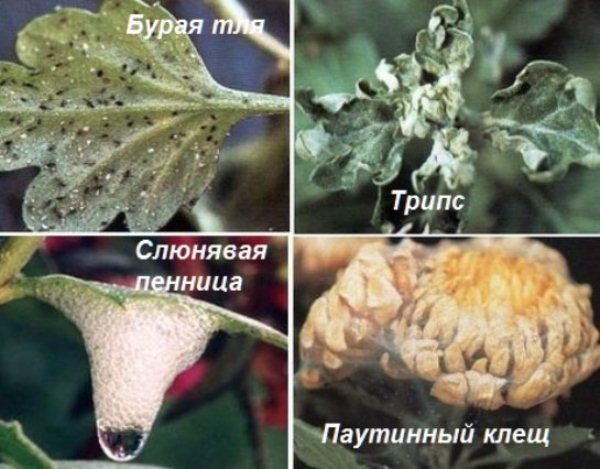 Diseases of the Korean chrysanthemum
Diseases of the Korean chrysanthemum
Of the pests of chrysanthemums, nematodes are terrible, most often infection occurs when the rules of agricultural technology are not followed. Nematodes are difficult to remove with chemicals, but systemic insecticides are quite effective in the fight against aphids, thrips, ticks or whitefly. However, for the complete destruction of pests, 2-3 treatments will be required.
What are Korean chrysanthemums
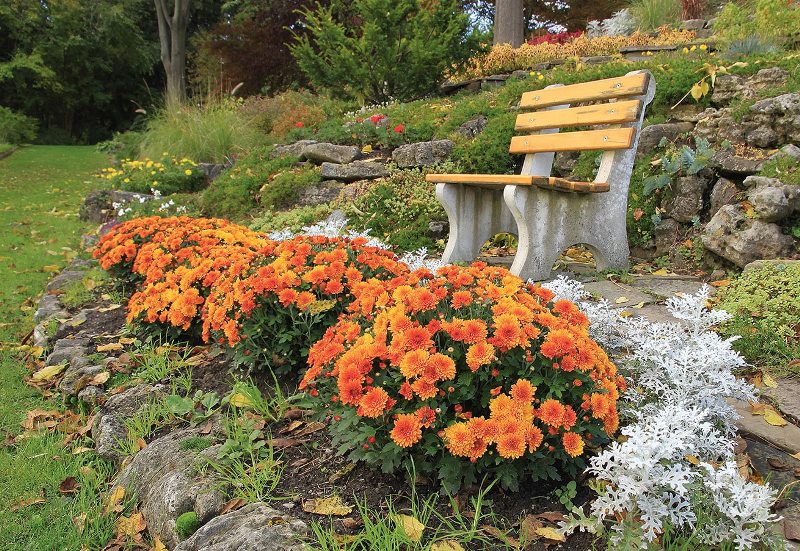
Most gardeners prefer to grow Korean chrysanthemum on their plots - hybrids perfectly adapted for cultivation in the open field. The second name for these frost-resistant, unpretentious flowers in planting and leaving is the Korean chrysanthemum Dubok. Its origin is explained by the fact that the leaves of most Korean varieties resemble oak in shape and structure.
Initially, Japanese breeders tried to get varieties of Korean "beauties", taking as a basis small-flowered varieties, including Korean ones. In Russia, the first few attempts to grow them in the open field date back to the end of the 19th century. And they were seriously engaged in their selection and cultivation only at the beginning of the 40s of the XX century, shortly before the start of the Great Patriotic War.
All chrysanthemums are Korean perennials. Their popularity among flower growers all over the world is explained by their wide decorative possibilities, long and prolonged flowering, a variety of appearance, and unpretentious care. In addition, the correct distribution of various species by planting time makes it possible to admire their lush beauty from the last days of July until late autumn.
Many people wonder how Korean varieties differ from multiflora. In fact, this question is not correct, since the Korean oak is not an independent species, and multiflora, if it is frost-resistant, is included in this group.
Mid-flowered chrysanthemums
Juriy Gagarin (Yuri Gagarin)
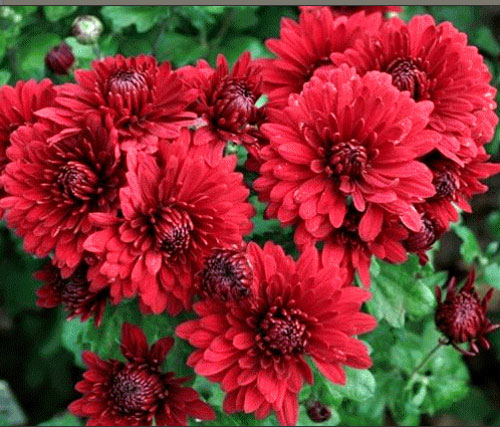
This variety has rich burgundy flowers, double, 5-6 cm in diameter. The bush is erect, 70 cm high. The beginning of flowering is the first half of September.
Splashes of champagne

Quite a powerful bush up to 90 cm high. Needle petals, light pink in color, and the middle has a yellowish dusting. The blossoming flower reaches 8-10 cm in diameter. It blooms from October to frost, winter-hardy variety.
Zarnitsa
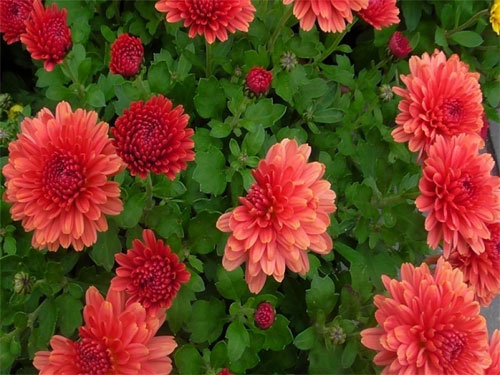
A bright red-brown pompom-shaped flower looks very impressive in bouquets and group plantings.The height of the bush is average, the flowering period begins at the end of August and lasts until late autumn. Open ground grade.
Straw hat
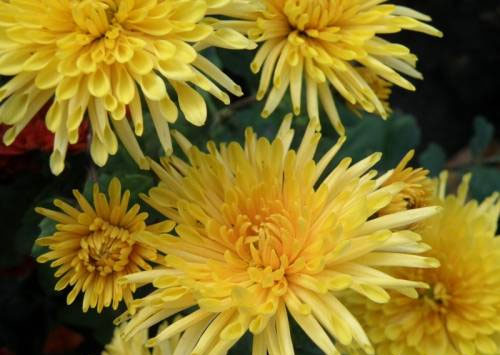
The flower is semi-double, bright yellow, up to 10 cm in diameter, the petals are long, graceful. Early and long flowering, plant height 80 cm. Winter-hardy variety.
Small-flowered chrysanthemums
Small-flowered chrysanthemums grow well in our gardens. Created, without exaggeration, a huge number of different varieties (tall and miniature, spreading and indoor, with different shapes of flowers and all kinds of colors).
Depending on the variety and age, one bush can grow from several dozen to several hundred inflorescences. Gardeners are attracted by these modest chrysanthemums, since they are less capricious than large-flowered and medium-flowered varieties, more viable.
Altgold
The bush is compact, up to 60 cm tall, the inflorescences are densely double, golden yellow or even dark yellow with a diameter of 5-7 cm, flat in shape. The leaves are dark green, small. Flowering period: late August to October.
Aurora
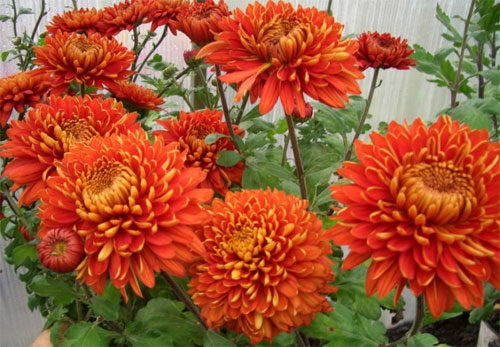
Plant height - 70-80 cm. Inflorescences are orange, large, 8-10 cm in diameter. Leaves are dark green, medium in size. Flowering time: September-October.
Golden Orpheus
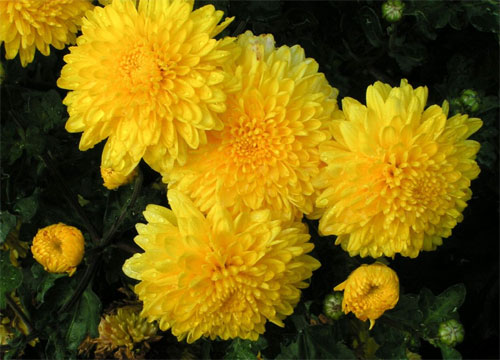
A mid-late cut variety of amazing beauty with double golden inflorescences. In the Middle Lane, in order to enjoy the beauty of its flowers, with the onset of cold weather, you will have to transplant the bush into a greenhouse or a glazed loggia.
Mascot
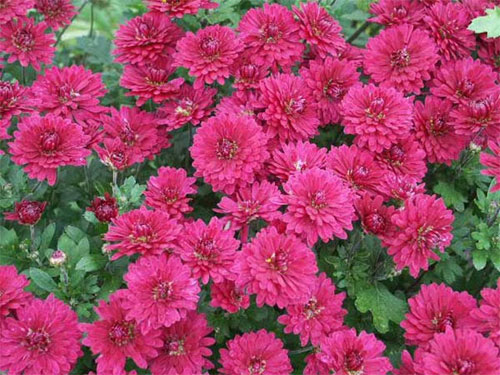
Indoor bush, upright, up to 25 cm high. The variety is semi-double, small-flowered. The inflorescence is flat, pink-crimson in color, about 2 cm in diameter. Lush bloom from late July until frost. Up to 25 inflorescences are formed on one plant.
a swan song

The height of the bush is 40-45 cm, the inflorescences are white-pink, double, flat, 5-6 cm in diameter. In the center of the flower, the petals are white, closer to the edges they turn pink as they bloom. Blooms from late August to mid-October.
Barbara
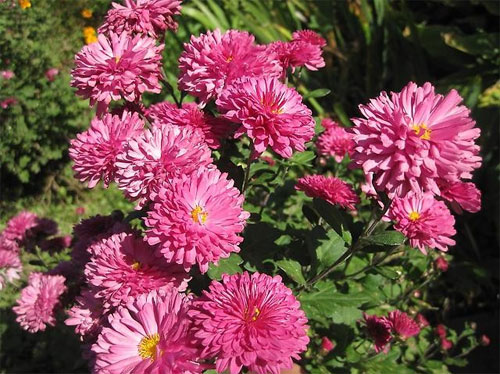
The bush is miniature, erect, up to 30 cm high. The inflorescences are small (4-4.5 cm in diameter), semi-double, lilac-pink, the color is richer in the center, lighter on the periphery. This variety begins to bloom in late August or early September (depending on the weather). Grown as an outdoor potted crop, does not grow indoors.
Snow elf
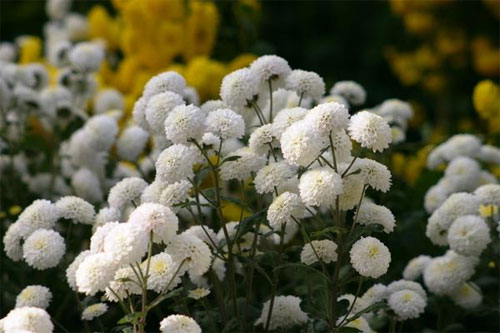
Unusual beauty grade. The plant is stately, rather tall (it grows up to 70 cm), inflorescences are pure white, densely double, pompom, with a diameter of 5-7 cm - they look like snow balls. The flowering period usually falls in September - October.
White korean
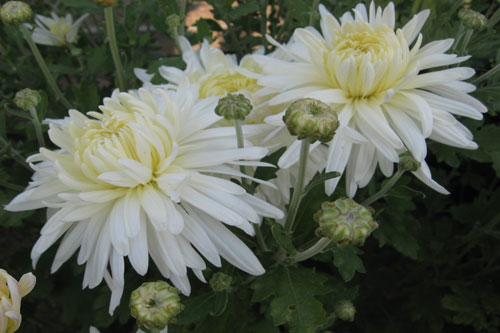
The bush is high, spreading. Inflorescences are large, silvery-white, up to 8 cm in diameter, with slightly curved ends of the petals. Blooms from September until frost.
Alexandrite

Medium-sized variety (bush height 35-40 cm), early flowering period, inflorescences are mostly semi-double, about 5 cm in diameter, some flowers can be double. The center of the flower is yellow-pink, the petals are almost white at the edges. Blooms from August to mid-October.
Sudarushka

Pay attention to this variety - it is not only beautiful, but also resistant to diseases and pests, most importantly, winter hardy. Inflorescences of a brick shade with a yellow center, small, but abundant flowering, petals do not crumble, do not fade
The height of the bush is 50 cm.
Valley Roof

The inflorescences are terry, fluffy, pink-lilac, flat shape, 6-8 cm in diameter. Flowering period - September - October. The variety looks beautiful both in cut and in borders. Unfortunately, it is not winter-hardy, and to preserve the plant, the bush must be dug out before frost and stored in a cold, bright room.
Based on materials from the magazine "I Love Flowers"
Chrysanthemum bouquets
When creating bouquets of chrysanthemums, for example, for a wedding ceremony, they usually refer to the meaning of the shades of their flowers:
- A bouquet with white flowers symbolizes the vulnerability, purity, innocence and tenderness of the bride (in this case, the bush white chrysanthemum is perfect).
- The presence of blue shades in the bouquet means carelessness, lightness and fun in a relationship with a loved one.
- Yellow symbolizes the cheerful mood that exists between the newlyweds.
- Pink - girlhood, tenderness and light disposition.
- Purple and lilac emphasize the originality and unique style of the bride.
- Red is the color of maturity and old age, but also romance along with well-being.

What green chrysanthemums symbolize
The cultural traditions of the peoples of the East gave the Europeans the custom of creating and presenting bouquets that carry a certain meaning. Understanding the "language of flowers", the ability to decipher their meaning and correctly compose a description is a real art.
In this language, chrysanthemum, which is often called "the queen of autumn" among the people, denotes chastity and calm beauty, dignity and perfection, abundance and resistance to adversity and the blows of fate. In the past, images of these flowers symbolized power and nobility, longevity and happiness. Now their different shades have their own symbolic meaning.
All shades of green have positive associations. They remind of childhood and youth, joy, harmony, tranquility, wisdom, and also embody hopes for a happy future.
Who is it customary to give green chrysanthemums
Knowing what the symbolic meaning of chrysanthemums of one color or another is, you can make a bouquet with these original flowers and put a certain meaning into it.
Green chrysanthemums are the result of a long and difficult work of breeders. The color of their petals is still exotic. Like other flowers of unusual shades, they are associated with originality, creativity, freedom, originality. Therefore, it is recommended to present them to people who are characterized by activity, cheerfulness, energy.
You can give a bouquet containing green chrysanthemums to a friend or friend, colleague, or partner. They also make the perfect gift for successful men. Such floristic compositions emphasize the individuality of the person to whom the flowers are intended, suitable for different occasions: official events, celebrations, wedding ceremonies and dates.
Green chrysanthemums are often included in bouquets of delicate, pastel shades: pink, cream, pale lilac. They become ideal gifts for girls and young girls, emphasizing their youth, beauty, romance, chastity, perfection.
Varieties
Today bush chrysanthemum is very popular. In addition to the fact that it has unpretentiousness, it fits perfectly into any landscape design due to the variety of its varieties and hybrid forms.
According to the shape of the inflorescences, bush garden chrysanthemums are divided into the following types:
Pom-poms with tongue-shaped petals gathered in a ball, reminiscent of a pom-pom.

- Anemiform, in which the buds consist of large petals collected in 1-3 rows. In size, the flowers with tongue-like petals are not very large.
- Semi-double, consisting of 3 rows of reeds, located around the center of the bud.
- Terry, distinguished by the variety and splendor of types and forms.

Among these plants, there are annual and perennial varieties. The first are represented by types: prominent, keeled, crowned, sowing. The main perennial varieties are bush white chrysanthemum and large. For cultivation in the open field, varieties resistant to various ailments, climatic and weather conditions, as well as pests are usually used.
There are a huge variety of varieties, and it is unrealistic to consider all these options in one article. Below are the names of spray chrysanthemums - the most popular crops loved by domestic gardeners.
Chrysanthemum multiflora in siberia.Growing chrysanthemum multiflora
Visiting a friend, I saw a curb made of round, low ones. It looks very beautiful, I wanted to try to breed this species myself. Tell me how to grow multiflora chrysanthemum and are there any nuances?
Chrysanthemums multiflora belong to the Astrov family. A characteristic feature of the variety is its short stature and the ability to form independently. Thanks to this, the bushes do not need support and pruning. Outwardly, the plant has the shape of a ball covered with flowers, and during flowering, the deciduous cap is almost completely covered with inflorescences.
Types of multiflora
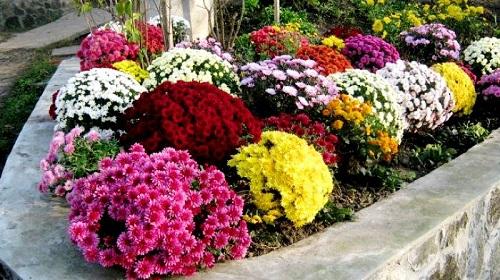
Chrysanthemum varieties are conventionally divided into three groups, depending on the onset of flowering:
- early varieties (August);
- medium varieties (September);
- late varieties (early October).
The maximum height of the bush during artificial formation reaches 70 cm, and the lowest is no more than 30 cm.
The only drawback of multiflora is its low winter hardiness, which is why, in the northern regions, perennial varieties often die in cold winters, despite additional shelter.
Planting and breeding chrysanthemums
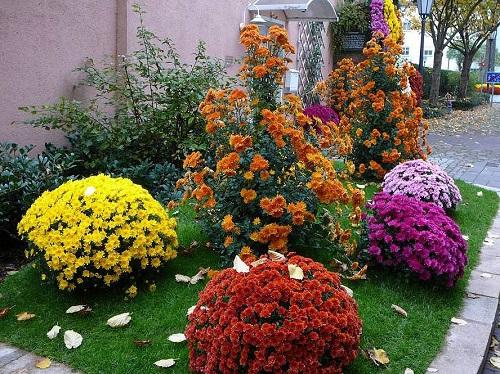
You can grow multiflora chrysanthemums both in pots and outdoors. The place for planting should be chosen well-lit and not blown through by drafts. Chrysanthemums love loose soil, therefore, additional sand and organic matter must be added to the area with heavy soil.
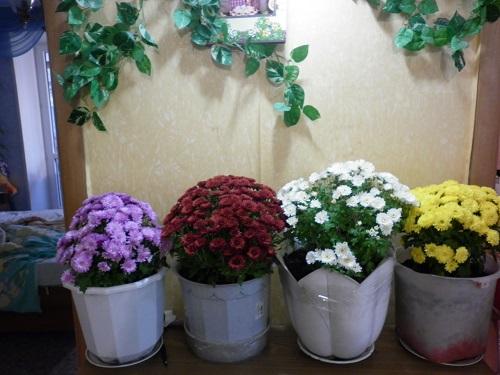
Chrysanthemum reproduces in several ways.
Seeds:
- Sowing in open ground. In early May, prepare the holes at a distance of 30 cm from each other, water, put on a couple of seeds. Sprinkle with a small layer of earth and cover the area with foil until germination. After the seedlings germinate, leave one bush at a time, planting the rest. Flowering will occur 1.5 months after seed germination.
- Sowing seedlings. At the end of February, sow the seeds in a container, cover with foil. Periodically ventilate the greenhouse, and moisten the soil. After the formation of 2 true leaves, dive the seedlings into separate pots.
Cuttings. Sliced cuttings are rooted either in water with their further planting, or immediately planted in soil consisting of a mixture of turf, perlite and sand.
By dividing the uterine bush. Dig up an adult bush and divide it into parts, each of which should have its own root system. Cut the tops with pruning shears, plant in the holes and water abundantly.
Basic rules for caring for multiflora
Chrysanthemum of this species, however, like others, is very fond of moisture. In hot summer, watering should be carried out daily, and the soil around the bush should be loosened. During the growing season, it is enough to make one feeding with a solution of mullein or bird droppings, provided that the hole was fertilized before planting.
Once every three years, the bushes should be transplanted to a new place so that the variety does not degenerate and lose its shape.
Use in floristry and landscape design
 Bridal bouquet with green chrysanthemums
Bridal bouquet with green chrysanthemums
Chrysanthemums with the delicate name Feeling Green are an excellent cut variety, highly appreciated by florists for their high decorativeness and stability in cut.
In a vase, green pom-poms can stay fresh for up to 3 weeks, look delightful in bouquets, adding charm and originality to them. Often these flowers are used for floristic compositions intended for men, and are also used to create floral figures.
In landscape design, the variety is rarely used. This is due to the fact that hybrid cut varieties are thermophilic, and take root in the open field only in a warm southern climate. Nevertheless, lush chrysanthemum bushes with bright green pompoms would be perfect for decorating a flower garden, rabatka, garden path or flower border. Compositions with them are very original.They look especially harmonious in combination with decorative low-growing conifers, cereal ornamental crops, and also as a background for other garden flowers of all kinds of shades and colors.


